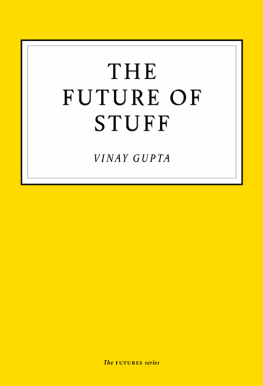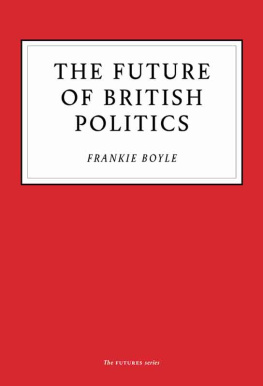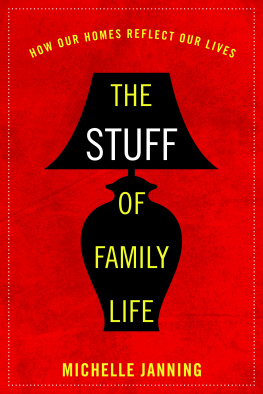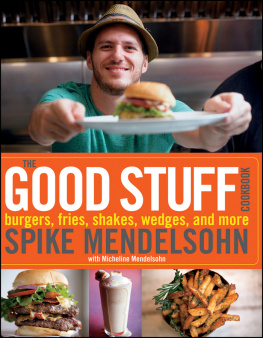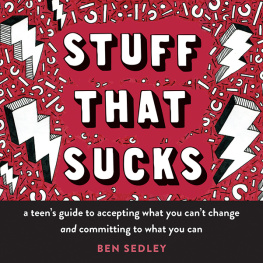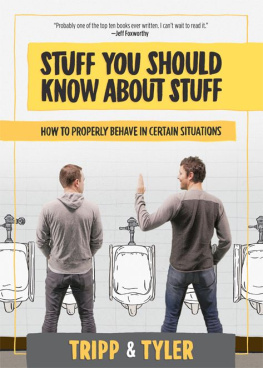

Vinay Gupta edited the crowdsourced and crowdfunded The Future We Deserve: 100 Essays About the Future (2011). He coordinated the release of the Ethereum blockchain, and is CEO of Mattereum, the company creating digital identities for the world of physical goods. He has a background working in worst-case scenario planning and disaster mitigation, and is the inventor of the patent-free hexayurt, a sturdy, affordable, easy-to-build temporary shelter.
ALSO IN THE FUTURES SERIES
The Future of Serious Art by Bidisha
The Future of British Politics by Frankie Boyle
The Future of Men by Grace Campbell
The Future of Seduction by Mia Levitin
To my guru, Bhavani Ma, who lived as a little old travelling nun with no home to rest her head, and constantly traversed America spreading light and love wherever she was invited to stay. She lived as an unknown, and these might be the only words in print about her, but the ripples she created will be felt across the world for centuries to come.
CONTENTS
FOREWORD
Where and who do we want to be?
How might we get there?
What might happen if we stay on our current course?
This is one of the five books that, together, comprise the first set of FUTURES essays. Each short book in the set presents a beautifully written, original future vision by an accomplished writer and subject expert. Read individually, we hope these essays will inform, entertain and challenge. Together, we hope they will inspire readers to imagine what might lie ahead, to figure out how they might like the future to look, and think about how, collectively, we might make the transition from here to there, from now to then.
Over the life of the series we aim to publish a diverse range of voices, covering as broad a view of the future as possible. We ask our authors to write in a spirit of pragmatic hope, and with a commitment to map out potential future landscapes, highlighting both beauties and dangers. We are hugely proud of each of the essays individually, and of the set overall. We hope you get as much out of reading and arguing with them as we have from the process of getting them out into the world.
This first set of FUTURES would have been impossible to publish without the enthusiastic support of Tortoise Media, Unbound and the subscribers whose names youll find listed at the back of each essay. Michael Kowalski, Tortoises Head of Product, introduced co-founder Katie Vanneck-Smith to the idea, and she made it happen. Annabel Shepherd-Barrons unparalleled strategic capabilities kept the project steady and on course. Matthew dAncona offered superb editorial guidance with extraordinary kindness and generosity of spirit, and Jon Hills designs for the book jackets are elegant perfection. Fiona Lensvelt, DeAndra Lupu and their colleagues at Unbound have proved wonderfully creative and flexible throughout.
This first set of FUTURES essays was commissioned in autumn 2019, in the midst of the Brexit saga, and edited in spring 2020, in lockdown, as Covid-19 changed everything. As we write, it looks unlikely that, by the time you read this, our lives will have settled into any kind of normal old or new. Still, argument, wit and enlightened thought remain amongst our greatest strengths as a species, and even during an era as stressful and disorienting as the one we are experiencing, imagination, hope and compassion can help us mine greater reserves of resilience than we might expect. We hope these essays can, in a small way, help us find some light at the end of the tunnel.
Professor Max Saunders, Series Editor
Dr Lisa Gee, Programme Director and Editor
May 2020
THE FUTURE OF STUFF
SECTION ONE: JUSTICE AND DESIRE
SEEING UPSTREAM, SEEING DOWNSTREAM
Theres no such thing as a car.
At least, theres no such stand-alone object called a car. If you think of the car as the figure in the gestalt sense, the ground on which the car stands is literally a road made just for the car. The car may have a tank of petrol in it, but there better be another tank of petrol right behind that one when it runs dry, or the car becomes a particularly expensive and impractical paperweight.
The fact that we think about and price the car as a stand-alone object, rather than as something embedded in a complex infrastructure, is how cars are able to do so much environmental and social damage, driving up house prices as parking competes with homes, destabilising the climate and threatening future food production with their noxious exhalations. In practice, we simply never price in the externalities of the car with the car: the roads, parking spaces, petrol stations and garages all divert resources from other causes, but car buyers do not pay for these things.
The car is like a cell in an invisible body we barely notice. This body can be perceived as Richard Dawkinss extended phenotype . The physical body of an animal, as defined by its DNA, is its phenotype. Dawkins argues that animals also have an extended phenotype: ants build ant hills, beavers build dams, humans create industrial society. Humans make cars, cars imply roads and petrol stations, but we do not see them as part of the car.
For everyday purposes, the perceived stand-alone carness of the car is created by a narrowing of our attention away from the whole systems view. Because we usually think about the car and not the road, we lose the systemic embeddedness which is actually crucial to the existence of the car. This tendency to see things but lose whole systems is a human perceptual limitation, like our blind spot. It is one aspect of what Gestalt psychologists call the Law of Pr gnanz . The law states that the mind will perceive complex things in the simplest functional way: humans automatically cut complexity very early on in the perceptual system of the mind.
Gestalt psychology studies how we turn a complex, ever-shifting environment into coherent objects, including both concrete things like a pair of shoes, and abstract concepts like political parties. A critical part of this process is separating figure (the thing) from ground (everything else).
An artificial narrowing, a near-exclusive focus on the figure of consumer goods to the total neglect of the ground is at the heart of our problems reasoning about stuff . It affects us in all areas, from global warming to human rights to public health and product safety. At the heart of all of these problems is the magical stuff illusion : that stuff magically comes into existence when we buy it and magically leaves existence when we throw it away, much like the matter of the Star Trek Holodeck. But real stuff is not like this; it is not conjured directly from the mind. In fact, all real stuff is the output of systems.
Seeing systemic embeddedness is central to our ability to reason about the future of stuff. The majority of the most revolutionary changes in the future of stuff will come from changes in the systems that produce the stuff. There is a gestalt between stuff and the systems which produce the stuff and, in this stuff/systems g estalt it is the production systems which shift first. New manufacturing technology or new financial arrangements enable the creation of new kinds of products. In manufacturing, the ground (tools) shifts before the figure (products).
The invisible networks of technologies and social practices which give stuff its value, its utility and its very existence are where all the innovation happens. The stuff comes along almost as an afterthought. Given new materials or new manufacturing technologies, designers will make a river of new things showcasing the wonders technology enables now.
Next page
